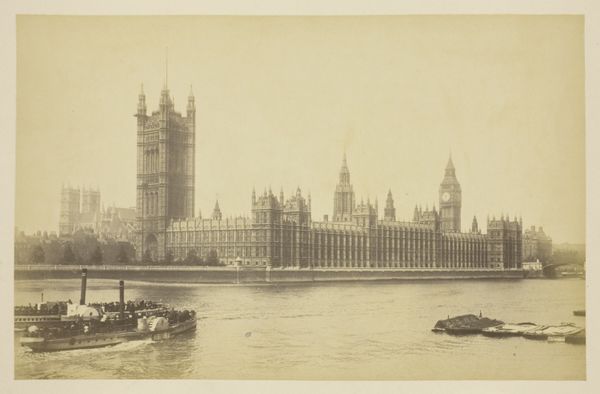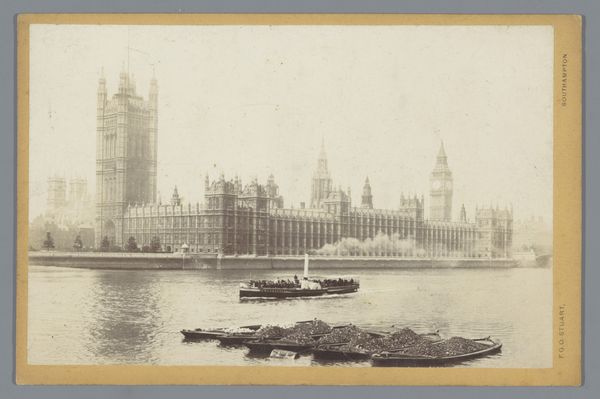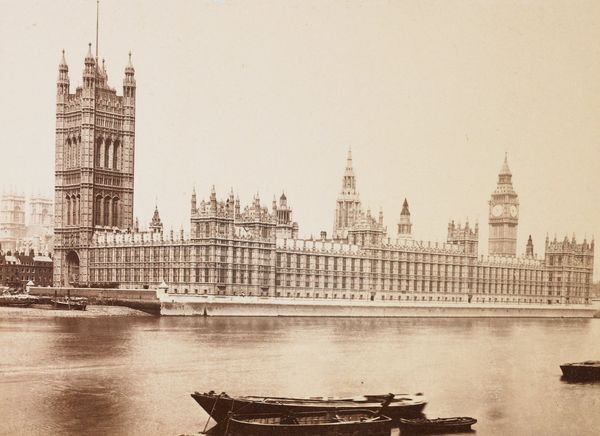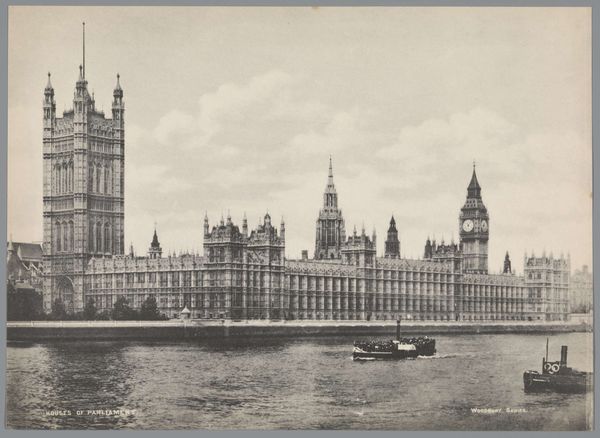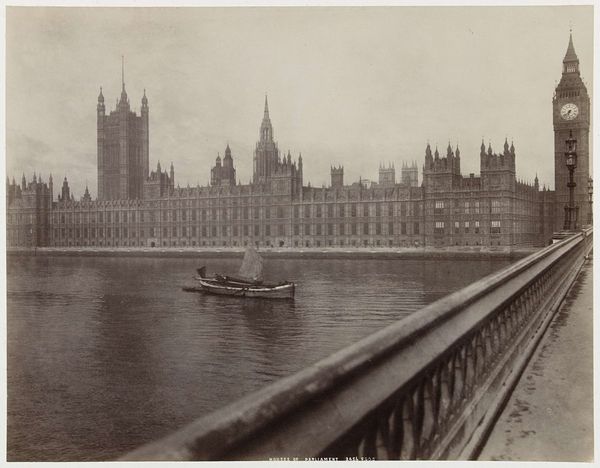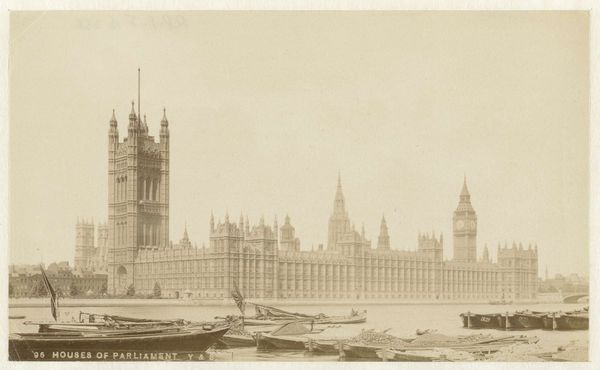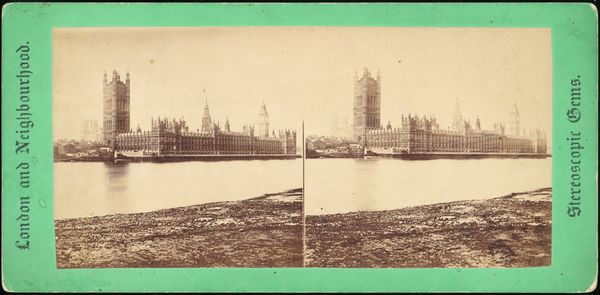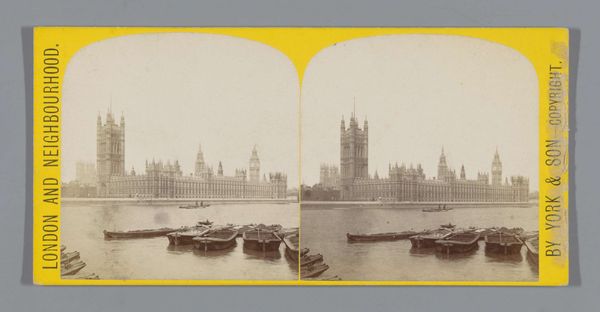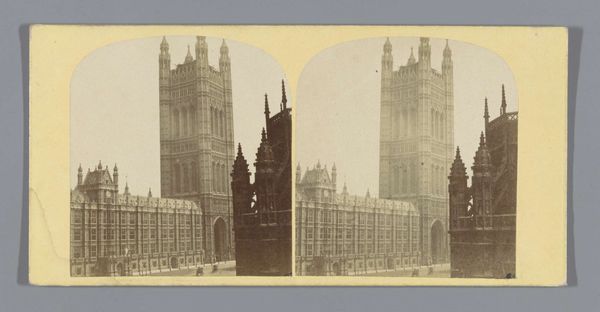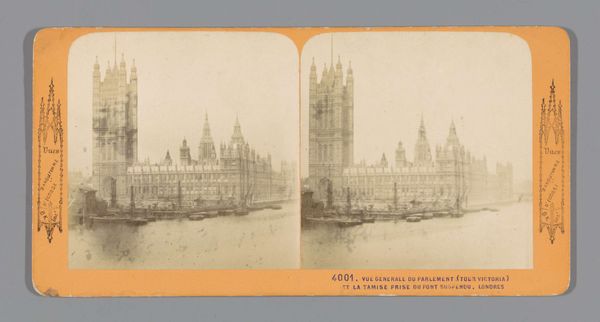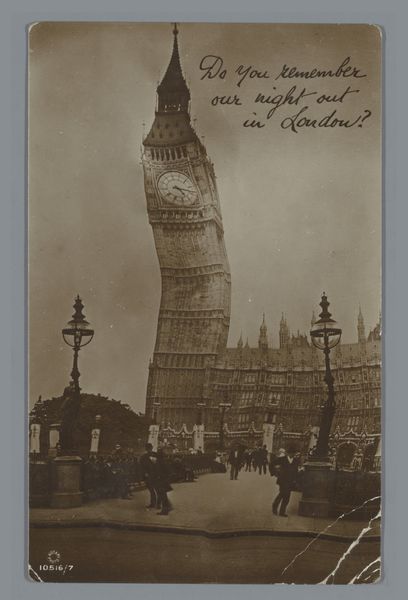
Gezicht op Westminster Abbey en Houses of Parliament in Londen 1880 - 1900
0:00
0:00
print, photography, albumen-print
# print
#
photography
#
cityscape
#
albumen-print
#
realism
Dimensions: height 107 mm, width 166 mm
Copyright: Rijks Museum: Open Domain
Curator: This albumen print, attributed to Römmler & Jonas, offers a "View of Westminster Abbey and the Houses of Parliament in London" sometime between 1880 and 1900. It’s currently held in the Rijksmuseum collection. Editor: Grey, mostly. Even the water seems stone-colored. And huge, those buildings; intimidating in their stateliness, reflecting, perhaps, England's control of its global Empire in that moment. What I appreciate is its feeling of reportage: a direct, unsentimental shot of power frozen in time. Curator: That realism, that directness, speaks to a shift in photography at the time. Albums such as this one played an interesting role in constructing public perceptions of national identity. Notice, too, how these albumen prints gained popularity as cheaper alternatives to other photographic techniques and their distribution networks helped to familiarize citizens with the symbols and architecture of nation-states. Editor: Nation-states and Empires, remember! And to your point, it IS a view. Staged. Deliberate. Even its dullness of affect makes it feel powerful; look, no sunshine for YOU. But, that’s my cynical side kicking in. As a piece of documentation, of social history, I'm curious: who owned the image, what other photos might be grouped in a set, a travel log of that period? It reminds me of those postcards one would buy during their travels, maybe it once served this function as well... Curator: Precisely! Albums of these pictures circulated widely, particularly amongst the growing middle classes with an appetite for consumer goods and images of a "grand tour". Editor: Do you suppose, viewed differently now, and as England shrinks in power... does it carry different reverberations, like looking at a fossil? Or does Westminster still hold its grandeur and impact? Curator: Perhaps both. The grand architecture continues to represent not just a history of political power but also the weight of cultural tradition. Looking at this, and knowing what’s happened since, is also a lesson in iconography and propaganda. It is interesting how historical documentation sometimes subtly, sometimes dramatically, shapes our understanding of national images over time. Editor: Hmmm... agreed! On that note, I feel a great respect for this stark capture. Makes me ponder on all that changes, and on what obstinately... stays.
Comments
No comments
Be the first to comment and join the conversation on the ultimate creative platform.

